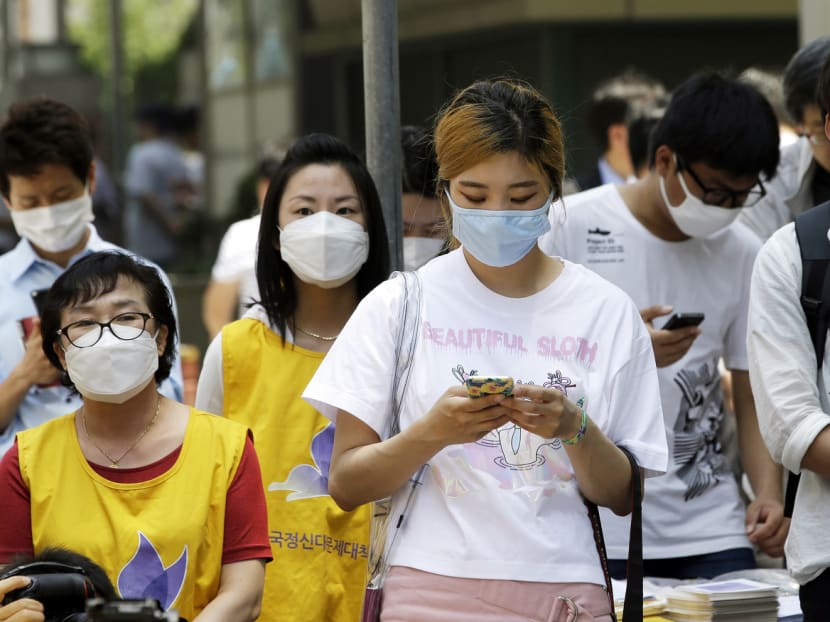S Korea failed to heed SARS lessons: Experts
SEOUL — Swift and extensive quarantine of those affected, as well as proper public information disclosure — these were the lessons learnt from previous viral outbreaks in Asia that South Korea failed to heed as they watched the Middle East Respiratory Syndrome (MERS) outbreak spiral out of control, say experts.

South Koreans wearing masks as a precaution against MERS in Seoul yesterday. The country’s missteps in controlling MERS are in stark contrast to its effectiveness in managing the SARS outbreak in 2003. Photo: AP
SEOUL — Swift and extensive quarantine of those affected, as well as proper public information disclosure — these were the lessons learnt from previous viral outbreaks in Asia that South Korea failed to heed as they watched the Middle East Respiratory Syndrome (MERS) outbreak spiral out of control, say experts.
The MERS outbreak was exacerbated by a series of blunders following the confirmation of the first few cases of infection in the country. One such misstep was negligence in the quarantine of infected patients and those who had come into contact with them.
“The government underestimated the potential spread of MERS in the initial phases,” Professor Sohn Myong-sei, former president of the Graduate School of Public Health at Yonsei University in Seoul, told The Wall Street Journal.
Some experts have also faulted the government for the way it initially handled information on the outbreak. None of the hospitals where patients were infected had been alerted about the possibility of MERS.
“Doctors were diagnosing the patients without knowing anything about MERS,” said Dr Jee Sun-ha, a professor of public health at Yonsei University. “Once the authorities detected the first case, they should have taken more aggressive steps, revealing the names of the hospitals the patients had visited and trying as much as possible to localise the outbreak.”
It was only on Sunday that the government revealed the names of all 24 hospitals visited by those confirmed to have been infected — two-and-a-half weeks after the first case was discovered — as they feared possible panic in the neighbourhoods around the hospitals. They have since added five more to the list.
After their names were released, some of the hospitals reported a plunge in the number of outpatients and even closed down temporarily.
South Korea’s missteps in controlling the spread of MERS are in stark contrast to its effectiveness in managing the outbreak of severe acute respiratory syndrome (SARS) in 2003, Mr Jeong Seok-hoon, a clinical microbiologist at Seoul’s Gangnam Severance Hospital, told the Wall Street Journal.
During the SARS outbreak, South Korea had swiftly quarantined four people who were infected with the disease overseas. The spread of the virus in the country was stopped as no additional cases were recorded.
The original diagnosis that missed what became South Korea’s first case of MERS was possibly caused by incomplete information from the patient about his travels. The World Health Organization has acknowledged that MERS is not an easy virus to identify early, because its symptoms are similar to other respiratory infections, such as the common cold. But the virus has been especially problematic in South Korea because of peculiarities in the country’s hospital system, experts said.
Patients jostle, cajole and name-drop to get referrals to the biggest hospitals, which they believe attract the best doctors. Family members and outside caregivers commingle with the sick in crowded emergency wards. They often stay with the patients in their rooms and do much of the nursing work — wiping sweat, emptying bedpans, changing sheets and exposing themselves to infections.
“Our crowded hospital environment is a weakness,” said Prof Cho Sung-il, who specialises in epidemiology in the Graduate School of Public Health at Seoul National University. “Chances of close contact are higher in a South Korean hospital emergency room, where seats and beds are usually arranged close together.” AGENCIES






